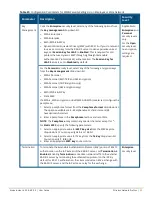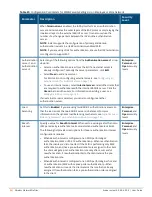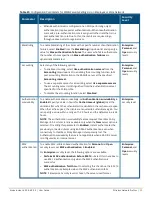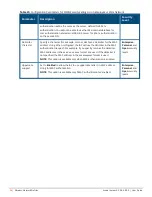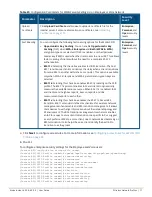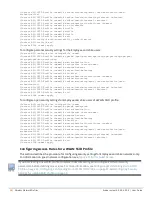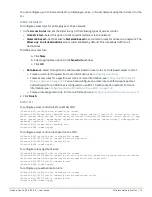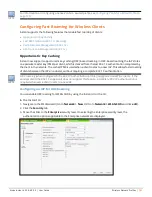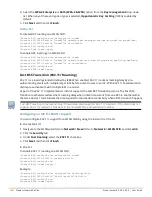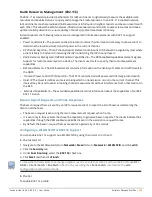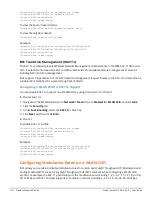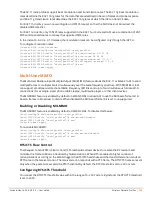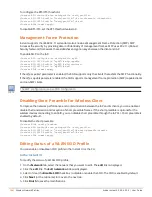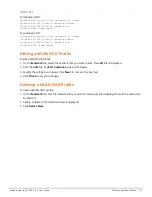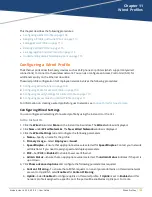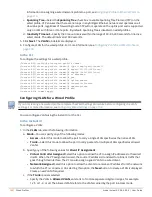
94
| Wireless Network Profiles
Aruba Instant 6.5.0.0-4.3.0.0 | User Guide
Parameter
Description
Security
Level
When
Termination
is enabled, the IAP by itself acts as an authentication
server and terminates the outer layers of the EAP protocol, only relaying the
innermost layer to the external RADIUS server. It can also reduce the
number of exchange packets between the IAP and the authentication
server.
NOTE:
Instant supports the configuration of primary and backup
authentication servers in an EAP termination-enabled SSID.
NOTE:
If you are using LDAP for authentication, ensure that IAP termination
is configured to support EAP.
Authentication
server 1 and
Authentication
server 2
Select any of the following options from the
Authentication server 1
drop-
down list:
l
Select an authentication server from the list if an external server is
already configured. To modify the server parameters, click
Edit
.
l
Select
New
to add a new server.
For information on configuring external servers, see
External Server for Authentication on page 156
l
To use an internal server, select
Internal server
and add the clients that
are required to authenticate with the internal RADIUS server. Click the
Users
link to add the users. For information on adding a user, see
Managing IAP Users on page 143
.
If an external server is selected, you can also configure another
authentication server.
Enterprise
,
Personal
, and
Open
security
levels.
Load
balancing
Set this to
Enabled
if you are using two RADIUS authentication servers, so
that the load across the two RADIUS servers is balanced. For more
information on the dynamic load balancing mechanism, see
Balancing between Two Authentication Servers on page 156
Enterprise
,
Personal
, and
Open
security
levels.
Reauth
interval
Specify a value for
Reauth interval
. When set to a value greater than zero,
IAPs periodically reauthenticate all associated and authenticated clients.
The following list provides descriptions for three reauthentication interval
configuration scenarios:
l
When Reauth interval is configured on an SSID performing L2
authentication (MAC or 802.1X authentication)—When reauthentication
fails, the clients are disconnected. If the SSID is performing only MAC
authentication and has a pre-authentication role assigned to the client,
the client will get a post-authentication role only after a successful
reauthentication. If reauthentication fails, the client retains the pre-
authentication role.
l
When Reauth interval is configured on an SSID performing both L2 and
L3 authentication (MAC with captive portal authentication)—When
reauthentication succeeds, the client retains the role that is already
assigned. If reauthentication fails, a pre-authentication role is assigned
to the client.
Enterprise
,
Personal
, and
Open
security
levels.
Table 23:
Configuration Parameters for WLAN Security Settings in an Employee or Voice Network














